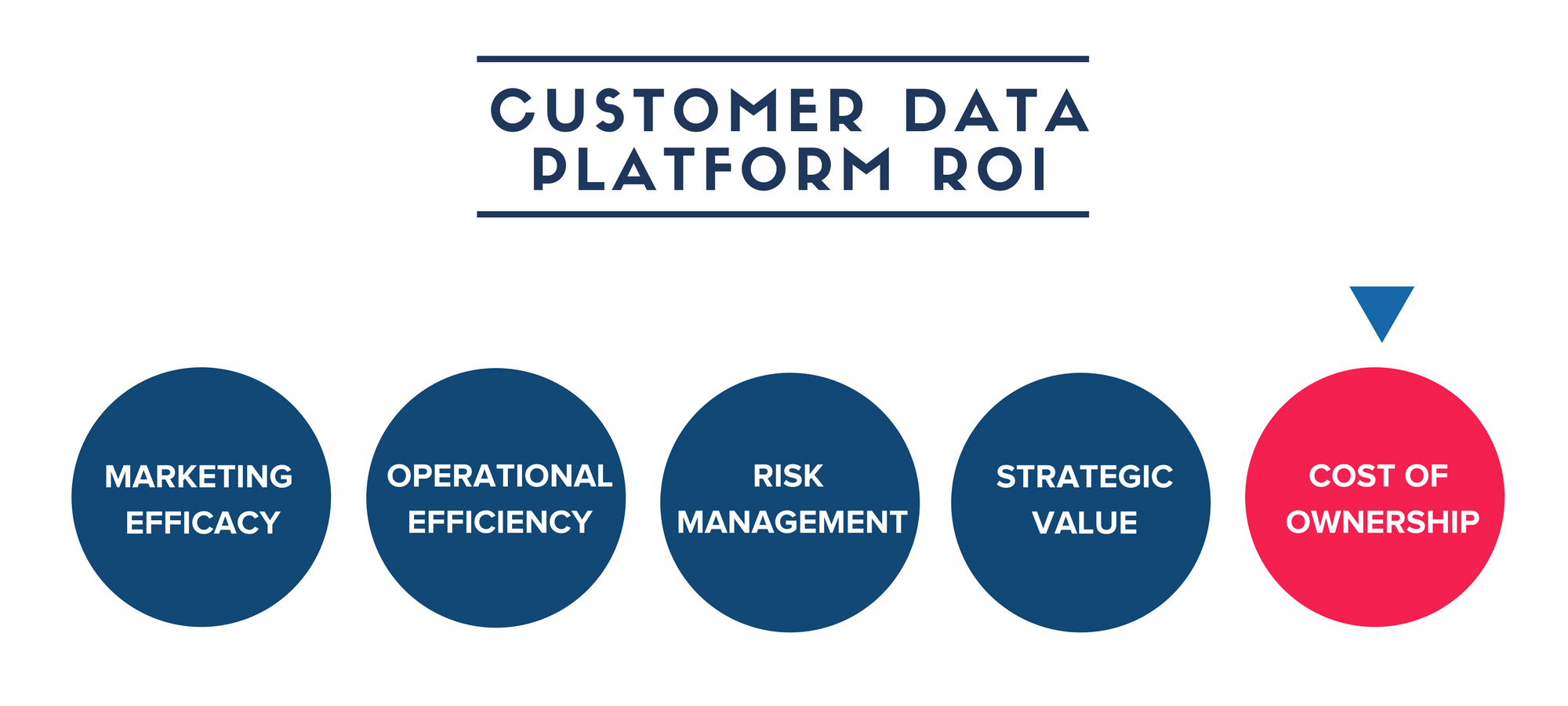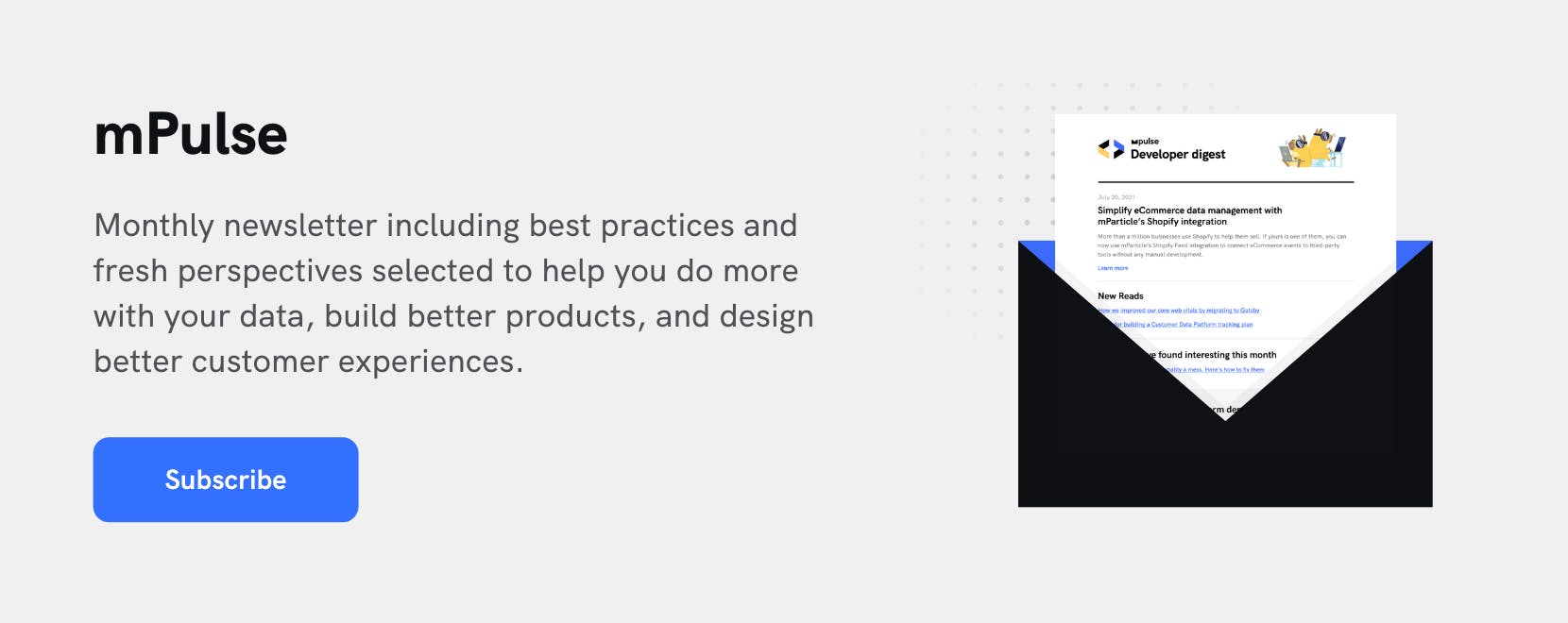CDP ROI: Total cost of ownership
This blog is the final installment of a five-part series designed to help you build a better business case for customer data management.

This blog is the final installment of a five-part series designed to help you build a better business case for data management. The first post covered marketing efficacy, the second marketing efficiency, the third risk management, and the fourth covered strategic value.

According to a recent survey, it’s estimated that companies in the U.S. and the U.K. lose $140 billion in wasted time, resources, and opportunities due to poor data management. Combine that with increasing costs of MSPs, and you’ve got a serious ROI drain.
To get the most out of your data management, you need to align costs with benefits and determine your total cost of ownership. The final installment of our CDP ROI series breaks down the cost of ownership into four major areas to help you build the last component of your business case: implementation and subscription, maintenance and data enhancement, professional services and training, and security.
Implementation and subscription
The most expensive part of a CDP is the implementation process and the cost of the CDP itself. Unlike other data management solutions, CDPs have a predictable pricing structure so marketers have the option to experiment and customize data integration, reporting, and collection without worrying about receiving an unexpectedly high bill. With more room to experiment, marketers have the liberty to create better, more targeted campaigns to help increase conversions while maintaining a low TCO.
Maintenance and data enhancement
The marketing landscape is always changing, which means that marketers have access to better customer data. But to take advantage of new technology and features from existing partner, brands have to invest time and energy into maintaining their data management practices and platforms.
With the average enterprise company’s stack topping out at 91 tools, that can translate to a lot of engineering time that could otherwise be used to improve customer experience and product development. Using a customer data layer, like a CDP, allows you to have a single point of access for your data, instead of having to integrate SDKs and APIs from each of your integrations. Regardless of your data management solution, you will need to able to collect and connect data from disparate services to be able to target customers effectively and reduce unnecessary spend. The question becomes whether the data management solutions you are considering are able to handle this efficiently without additional custom solutions and without causing your marketing, product, and engineering teams to spend hours wading through the data manually.
Professional services and training
Every solution you put into place is going to have a learning curve for your team, especially as the complexity of a solution increases. While they do take the initial help of professional services (typically provided by the CDP company as a part of your package) to ensure they are properly tooled and will provide secure, accurate access to customer data, CDPs are built to function without the help of engineering.
In fact, many CDPs, mParticle included, have functional UIs that allow for marketers to perform complex data connection, cleansing, and transformation with the click (or drag) of a few components. Audience segmentation, for example, is a case of choosing your parameters, then selecting them as filters, rather than having to run a series of queries to narrow down the scope. In the end, this system allows marketers to react to customer actions in the moment, increasing the likelihood of conversion without adding to the engineering debt. If you want to see an effectiveness lift from multichannel orchestration, for example, you need to factor in the cost of marketing team change management and training. If you are only focused on Integration cost savings you may not need to factor in this cost.
Security costs
As part three of this series states, security is one of the biggest hurdles facing marketers. Achieving and maintaining compliance with the most recent data privacy standards is non-negotiable, especially when you take into account the hefty fines associated with non-compliance. A good CDP is built with data privacy at its core, ensuring that data is encrypted from end-to-end. By implementing a CDP, companies can not only avoid fines from regulations like the GDPR, but also avoid data leaks that can undermine customers’ trust in your brand’s ability to keep their personal data personal.
To understand the ROI a CDP can provide, you need to weigh the costs of implementation and servicing fees against the cost of a potentially catastrophic data breach and fines. GDPR policy dictates that fines can equal up to 4% of global revenue per instance, which can quickly add up.
Conclusion
This series was designed to help you build a better business case for data management, and understand the levers with which to measure and optimize the ROI of the investments you’ve already made. No matter what systems you currently have in place, you should consider the time, risk, and cost involved to determine how it will affect your company’s bottom line. When it comes to data infrastructure investments, carefully considering how it will affect marketing efficacy, operational efficiency, risk management, strategic value, and cost of ownership to determine whether it’s right for your company’s needs. The right tool will help you increase your customer data’s value by making it more actionable, representing an opportunity to optimize the value return. If a CDP seems right for you, feel free to reach out or learn more about them in this in-depth guide.




